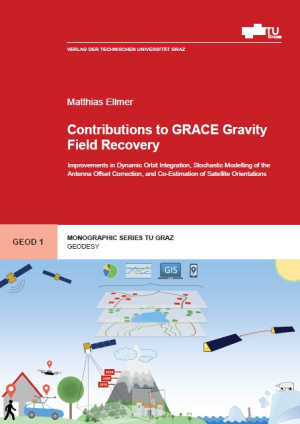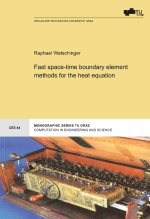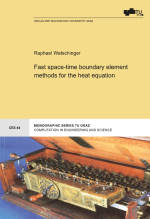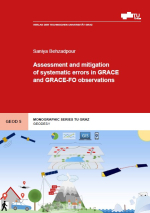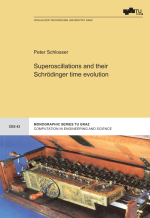Time series of global GRACE-derived surface mass variations have become an invaluable data source in the field of Earth system science. Prominent examples of subject areas that have particularly benefited from GRACE data are the study of the continental hydrological cycle, the cryosphere, and the global ocean mass balance. The work presented within this thesis is part of the community-wide effort to improve the quality of global gravity field solutions based on GRACE satellite-to-satellite tracking observations. Specifically, it is part of and builds on the ITSG-Grace2016 series of gravity field solutions.
The research within this thesis is divided into three main subjects: the study of numerical effects in the dynamic orbit integration necessary in computing GRACE gravity fields; the description and rigorous evaluation of the effect of the spacecraft orientation uncertainty on a correction applied to the GRACE inter-satellite ranging observable; and the co-estimation of improved satellite orientations within the least squares adjustment for the gravity field parameters.
Regarding the topic of dynamic orbits, a modified Encke approach is introduced which allows for the integration of dynamic orbits at a numerical resolution that is shown to be sufficient for GRACE-FO processing. To this end, the classical osculating Encke ellipse is replaced with a rigorously optimized reference ellipse parametrised in equinoctial elements. The dynamic orbit integrated based on this algorithm and parametrisation is shown to exhaust machine precision over a large part of the resulting orbits’ frequency spectrum.
Complete covariance matrices for the satellite orientation are propagated to the GRACE KBR antenna offset correction. The propagated covariance matrices describe the non-stationary contribution of noise in the satellite orientation observations on the correction applied to the inter-satellite ranging observations. This information is incorporated into the estimation of a complete stochastic model for the inter-satellite ranging observations, which is computed anew for each month of data. The improved stochastic model better describes the noise found in real observations, and can thus contribute in the determination of better gravity field solutions.
The covariance information for the satellite orientation is further used in the co-estimation of improved orientation parameters in the least squares adjustment for the gravity field parameters. Departing from the assumption of error-free and fixed satellite orientations leads to a reduction in temporal variability of the recovered gravity fields over the oceans. This methodology further improves estimates of the KBR antenna phase centre coordinates.

